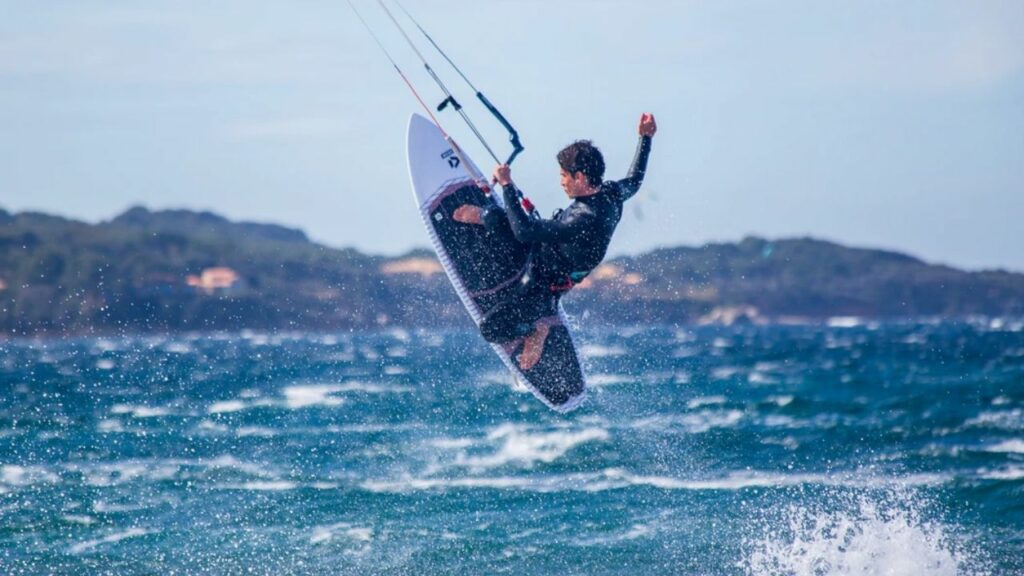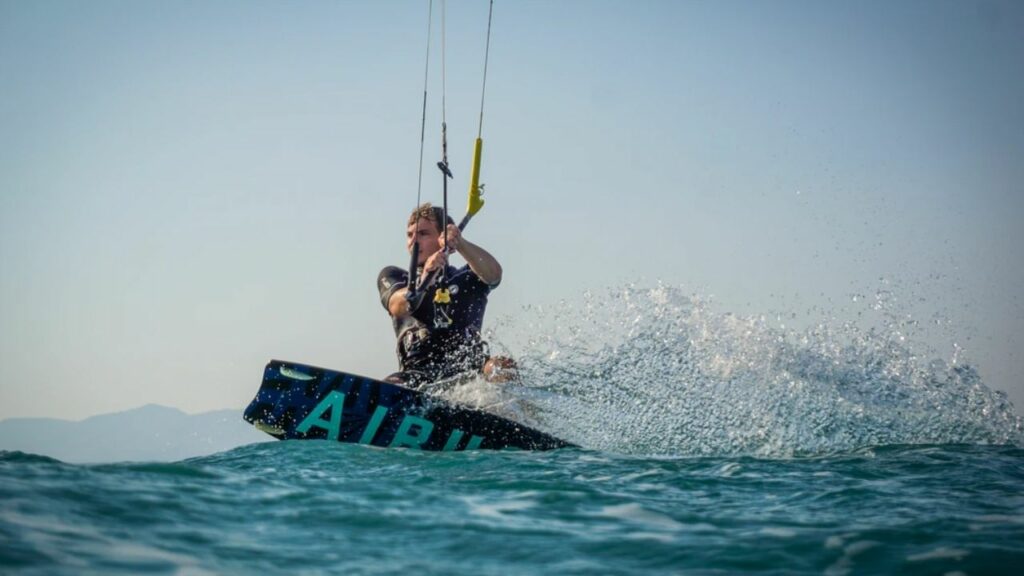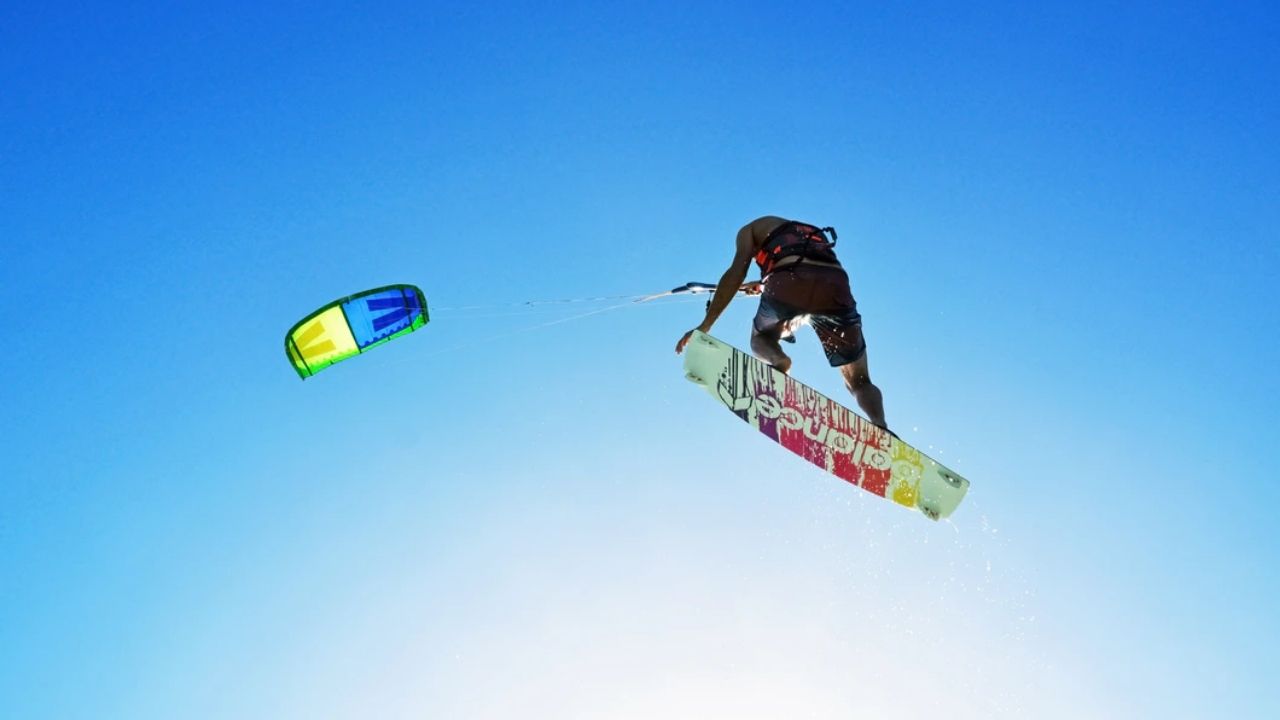Kitesurfing (or kiteboarding) is one of the best extreme sports to rejuvenate your work-tired body and mind for weeks to come.
It’s literally the whole package. Surfboard? Check. Freestyle tricks? Check. Breathtakingly scenic views? Check. Gravity-defying jumps and speed? Check and check. I mean, what more could you ask for?
If you’ve been following my guides on Elevated Adventurer, you know I love rock climbing and skydiving the most. But I tried kitesurfing for the first time a couple of months ago, and I can’t stop talking about it.
Since then, I’ve done kiteboarding atleast a dozen times, crawling my way up to reach the highest speed and jump for the near-perfect experience. I wrote this quick guide to teach what I’ve learned from a beginner’s POV and answer all your doubts. So, how high and how fast can you really go while kitesurfing? Let’s find out.
How high can you go kitesurfing?
WOO Sports recorded the highest kitesurfing jump – 114ft high performed by surfer Maarten Haeger in Cape Town, Africa, followed by Mike’s 110ft high jump with 45+ knots in December 2019. Maarten currently holds the world record for the highest kiteboarding jump.
But don’t expect to go that high just yet – even professional kitesurfers don’t expect to go upwards of 100ft after years of practice. Both Mike and Maarten are trained experts who have been kitesurfing for quite a while. There’s also no definite answer to how high you can jump.
1. How to jump high?
The height of a kitesurfing jump depends on a number of factors such as wind speed, wind direction, posture, near-perfect control, good kite, and luck. The trick to jumping high is almost always changing – the highest jump until 2017 was only 93ft compared to 114ft in 2021.
Beginner kiteboarders start from 10ft high jumps with only a few seconds of air time. Although, all hope is not lost because you can also jump upwards of 50-60 ft with practice and technique.
Follow these steps and practice doing them in sync to achieve your personal best:
- Gain the appropriate speed without losing control of the kite.
- Cut the wind at the correct angle so that it can carry you off the water level.
- Learn how to control and maneuver the board mid-air.
- Learn to steer the kite so that you reach maximum pull-back and tension to make the kite rise from wind pressure.
- Position your body correctly and switch between stances.
- Learn “edging” to achieve maximum height.
Wind direction also plays an important role, so make sure you check it before going out. There are generally two types of wind directions: side-shore and side-onshore.
Side-shore winds run parallel to the water while the side-onshore winds converge on the water level from above – you’ll need both of them to ride high and fast. Side-shore winds are helpful for new riders because they allow you to switch between outbound and inbound riding quickly.
In comparison, side-onshore winds are your best bet for jumping high.

2. How to measure high jumps?
There is no one standard method to measure the height of kiteboarding jumps. Professional kitesurfers have been experimenting with jump sensors and what not for a while, but there’s no agreed upon method yet.
I can tell you about three of the best tried-and-true methods for measuring your jumps though. These methods require you to record a video, preferably using GoPro, or have a friend record you.
- The Traditional Approach: Have someone hold a stick while you make the jump and measure the height from the bottom end to the point you marked. I’ve used it myself – it’s not the most efficient method, but it’s fun to do with friends.
- The Mathematical Approach: This requires a bit of math, and it can give you a ballpark number for sure. Get the grid / pixel ratio of the photos you clicked and gauge your jump height using the almighty formulas.
- The Modern Approach: Get a state-of-the-art waterproof GPS watch, preferably the ones officially developed by WOO Sports, and let it do the calculation while you go out.
3. Do you need special equipment for jumping high?
You might think you need special equipment for high jumping based on the dozens of “specially-engineered” products advertised on the market today. But my personal experience says otherwise.
You only need a good set of equipment and practice along with critical factors such as the correct wind speed, direction, etc., to try high jumping during your next kitesurfing outing.
Some kiteboards are designed like a large fin and many kites are shaped like a canopy to accommodate high jumps.
How fast can you go kitesurfing?
Roberto Douglas (USA) holds the title of the fastest kitesurfer at blazing 39.04 knots (44.92mph) recorded by the Guinness Book of World Records. It was recorded and verified by the World Sailing Speed Record Council on 10 June 2019 at the Prince of Speed event in France.
But don’t even think of trying that as a newbie.
1. How much does wind speed matter?
Wind speeds matter a lot when kitesurfing, especially when the purpose is to jump high because you need to ride the air to achieve certain heights. The wind speed needs to be strong enough to carry your weight.
Kitesurfers with “average” weight need at least 12mph of wind speed to surf in the first place. For kitesurfers over 200lbs, the wind speed needs to be at least 15-16mph. Be sure to choose a kite size that is appropriate for the wind speed in the area.

Keep in mind that there’s such a thing as “too windy.” Don’t try to go out in a rainstorm or even when the wind speed is above your comfortable number. Most pros can go out at 40mph, but that speed isn’t for beginners.
2. How to kitesurf faster?
Intermediate kitesurfers of “average” weight can go as fast as 15mph to 25mph. This speed can be doubled up to 40mph with certain kiteboards and favorable weather conditions, but it’s hard to control this speed for more than a few seconds.
Kitesurfing speed depends on the following factors:
- Wind speed and conditions (apparent winds help attain speeds).
- Type of board (whether it’s race board, speed board, or hydrofoil).
- Your control and stance.
Is there a weight limit for kitesurfing / kiteboarding?
If anyone ever told you that you can’t go kitesurfing because of your weight, they couldn’t be more wrong. This guy on Reddit weighs 265 lbs and kitesurfs whenever he wants with no problems.
There’s no weight limit in kiteboarding. Both heavy-weight and light-weight surfers can enjoy kitesurfing as long as the wind speed is favorable. Heavy-weight kitesurfers, however, may find it challenging to perform flashy moves because of inertia.
Here’s an excellent article by MacKiteBoarding.com that explains this in detail.
Is kitesurfing bad for your back?
Kitesurfing can be bad or strenuous for your back depending on how intense and frequent you kiteboard. Most kitesurfers are likely to suffer minor backaches after a day out, but it gets better once you learn proper control and surf stances.
But on the flip side, kitesurfing can also be good for your back when done correctly. Posture-intensive kitesurfing can even improve a long-term back condition.
Surfers with short-term or long-term back pain problems such as bulging discs or slipped discs sometimes find the beginning of their kitesurfing sessions annoyingly painful. This happens when you suddenly put stress on the affected area.
After only a few minutes though, you’ll have an entirely different feeling. The kitesurfing stance, especially when you edge your kite, can be a yogic remedy for your back problems by putting your back muscles in position. But take caution if you’re a beginner because a wrong stance can just as quickly worsen your condition.

